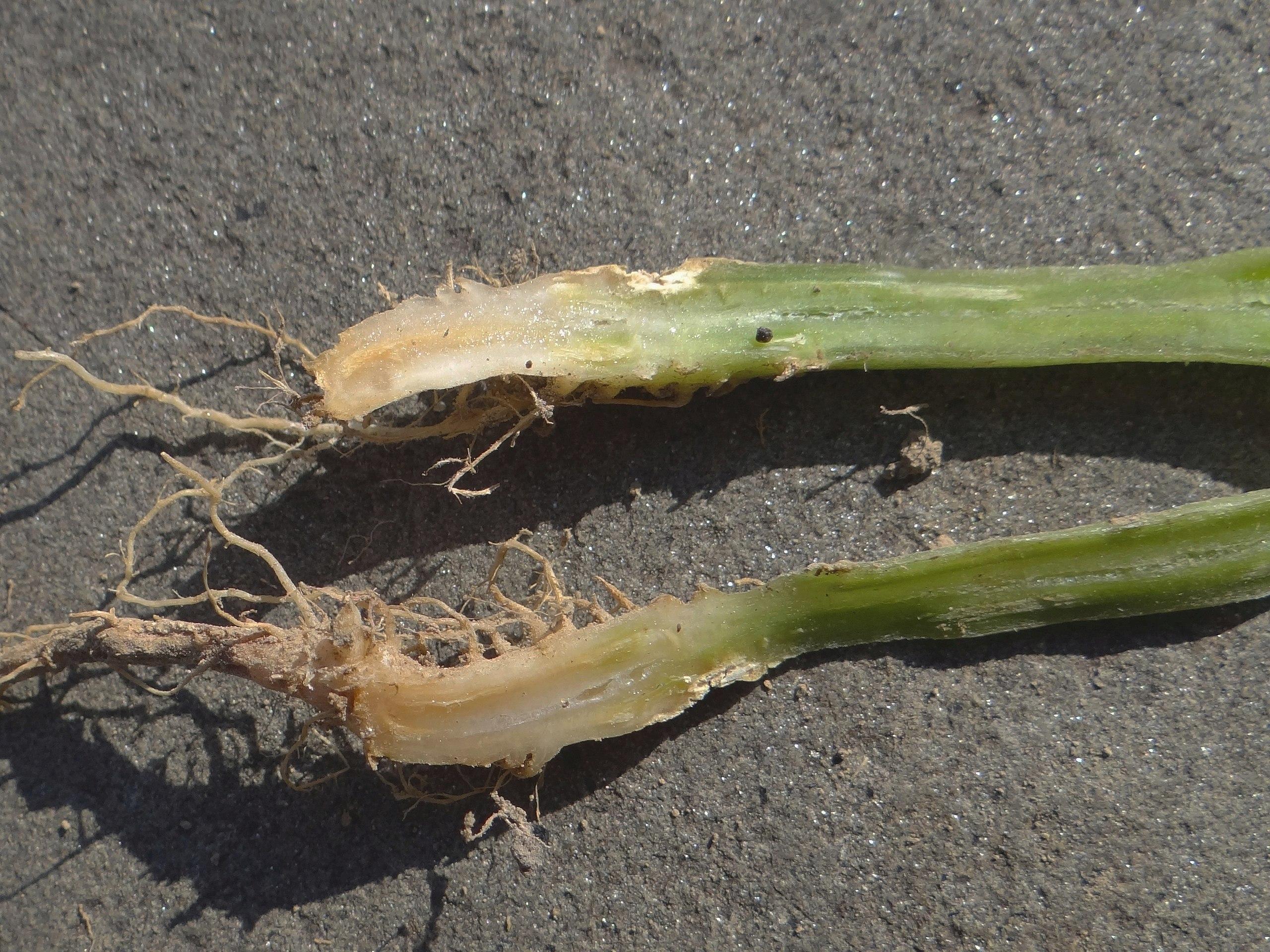
Damping off
Pythium spp.
Also Known As - Root rotWhat is Damping off, Root Rot (Pythium spp,)?
Damping off is a fungal infection that primarily affects young plants, causing them to wilt, collapse, and die. Various fungi, including Pythium spp., are responsible for this condition. Nearly all fruit, vegetable, field, and ornamental crops are susceptible. Pythium spp. can also induce root rot, especially in waterlogged conditions. Symptoms include dark-brown to black water-soaked lesions that quickly spread across seedlings. Post-emergence, brown water-soaked lesions appear on roots and hypocotyls, leading to wilting and eventual death.
How does Damping off, Root Rot (Pythium spp,) occur?
Pythium spp. are soil-borne fungi capable of both sexual and asexual reproduction. They infect plants through their roots, gaining entry through wounds or natural openings. Thriving in warm and moist soil, Pythium spp. can persist there for extended periods, awaiting suitable host plants to infect. Once inside a plant, they can cause various diseases.
Symptoms
1 - Effect On Plants
Pythium spp. can result in damping off and root rot, reducing plant growth, causing plant death, and lowering yields. This can lead to economic losses for farmers and gardeners.
2 - Effect on Soil
Pythium spp. can survive in soil without host plants and harm soil fertility by killing beneficial microorganisms, disrupting the soil food web, and reducing plant growth and yield. This can lead to soil erosion and degradation.
3 - Environmental Consequences
Pythium spp. can spread plant diseases, harm ecosystems, and cause invasive species if introduced to new areas via soil or plant materials.
Solutions
1 - Cultural Practices
• Plant resistant varieties of plants whenever possible • Ensure good soil drainage and avoid waterlogging. • Avoid overwatering and use proper irrigation techniques. • Rotate crops and avoid planting susceptible plants in the same location repeatedly. • Use clean planting materials and sterilize tools and containers.
2 - Integrated Pest Management
• Incorporate multiple control measures such as cultural practices, chemical control, and biological control to manage Pythium spp. • Regularly monitor plants for signs of disease and act at the first sign of infection.
3 - Biological Control
• Use biocontrol agents such as beneficial bacteria or fungi to suppress Pythium spp. • Use natural products like neem oil, and garlic extract, to reduce the spread of the disease.
4 - Chemical Control
• There are several fungicides available for controlling Pythium spp., including metalaxyl, mefenoxam, propamocarb, fludioxonil, and azoxystrobin. Always read and follow label instructions when using fungicides.
